Column: DWP’s new leader wants to shake things up. It won’t be easy
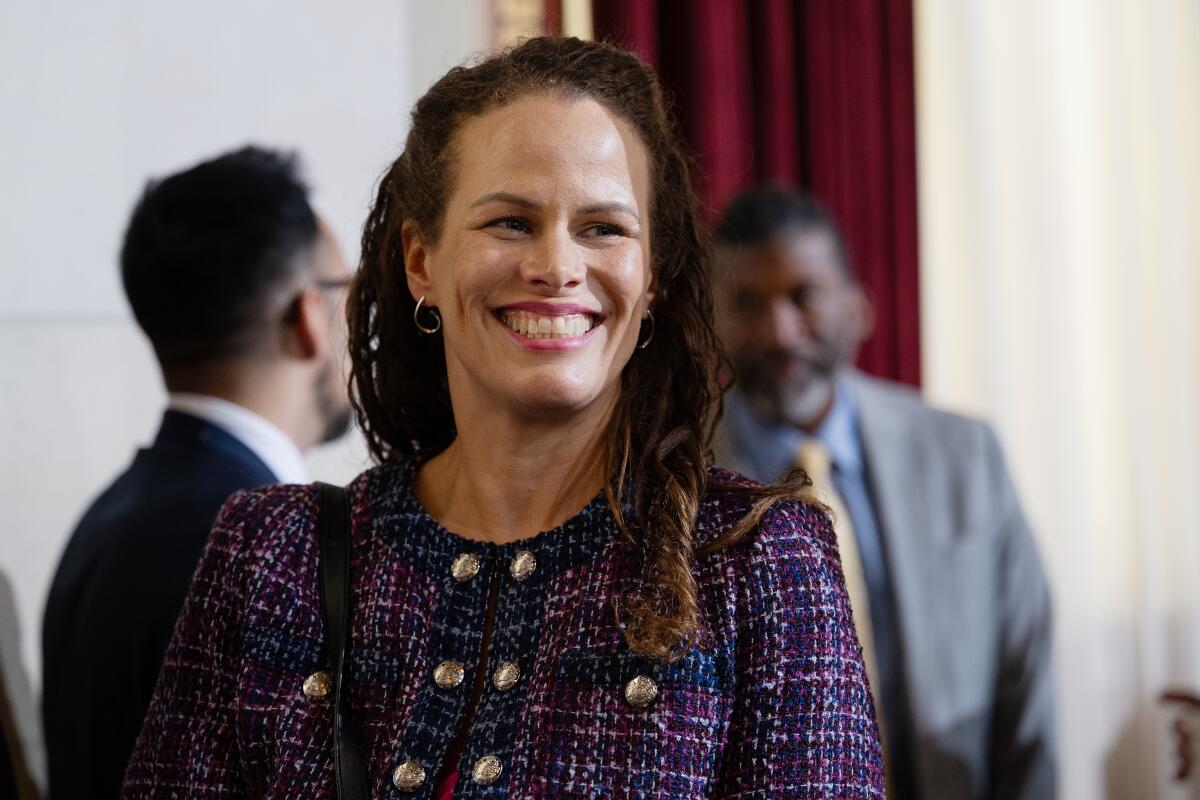
- Share via
An honest-to-goodness map of the American West would show L.A.’s tentacles everywhere.
You’d see canals — the Los Angeles Aqueduct, running along the base of the Sierra Nevada, carrying water from the Owens River; the State Water Project, meandering through the San Joaquin Valley, supplying many Southern California cities and farms; and the Colorado River Aqueduct, cutting through the desert on its mission to deliver water from desert to coast.
You’d see electric lines too — a sprawling network of wires that over the decades have furnished Angelenos with power from coal plants in Nevada, Utah and Montana; from nuclear reactors in Arizona; and from hydropower dams in the Pacific Northwest.
You're reading Boiling Point
Sammy Roth gets you up to speed on climate change, energy and the environment. Sign up to get it in your inbox twice a week.
You may occasionally receive promotional content from the Los Angeles Times.
Los Angeles has reshaped the West. And the city’s Department of Water and Power has been the agent of change.
Last month, Janisse Quiñones took the helm as the agency’s new leader, after being recommended by L.A. Mayor Karen Bass and confirmed unanimously by City Council. She’s got a tough job ahead of her, with the city targeting 100% clean energy by 2035 — a decade ahead of California’s statewide goal. DWP is also trying to protect the city from climate change-fueled droughts by getting 70% of its water from local sources such as storm runoff, underground aquifers and recycling by 2035 — another huge ask.
Can we make those dreams a reality? Quiñones has been on the job less than a month, but she’s confident.
“I think we will meet both [targets]”, she told me this week at DWP’s downtown headquarters. “Ninety percent of it is attainable, and it’s going to be tough. The last 10% we might not have the answers. But I’m pretty sure we’ll get the answers.”
Quiñones comes from the private utility industry. She previously worked as senior vice president of electric operations at Pacific Gas & Electric, and before that at utilities National Grid and San Diego Gas & Electric. She also did an eight-month stint in Puerto Rico, where she grew up, helping rebuild the island’s electric grid after it was largely destroyed by Hurricane Maria in 2017.
“I was there seven days after the storm hit,” she said.
Quiñones definitely brings a private-sector mentality to DWP’s mid-century modern John Ferraro Building, where her 15th-story office offers sweeping views toward Dodger Stadium and the Hollywood Hills. In our interview, she referred to the public agency as an “engineering and construction company.” And although she’s taken on the traditional title of “chief engineer,” she won’t be called “general manager,” the other moniker bestowed on her predecessors. Instead, she’ll be DWP’s chief executive officer.
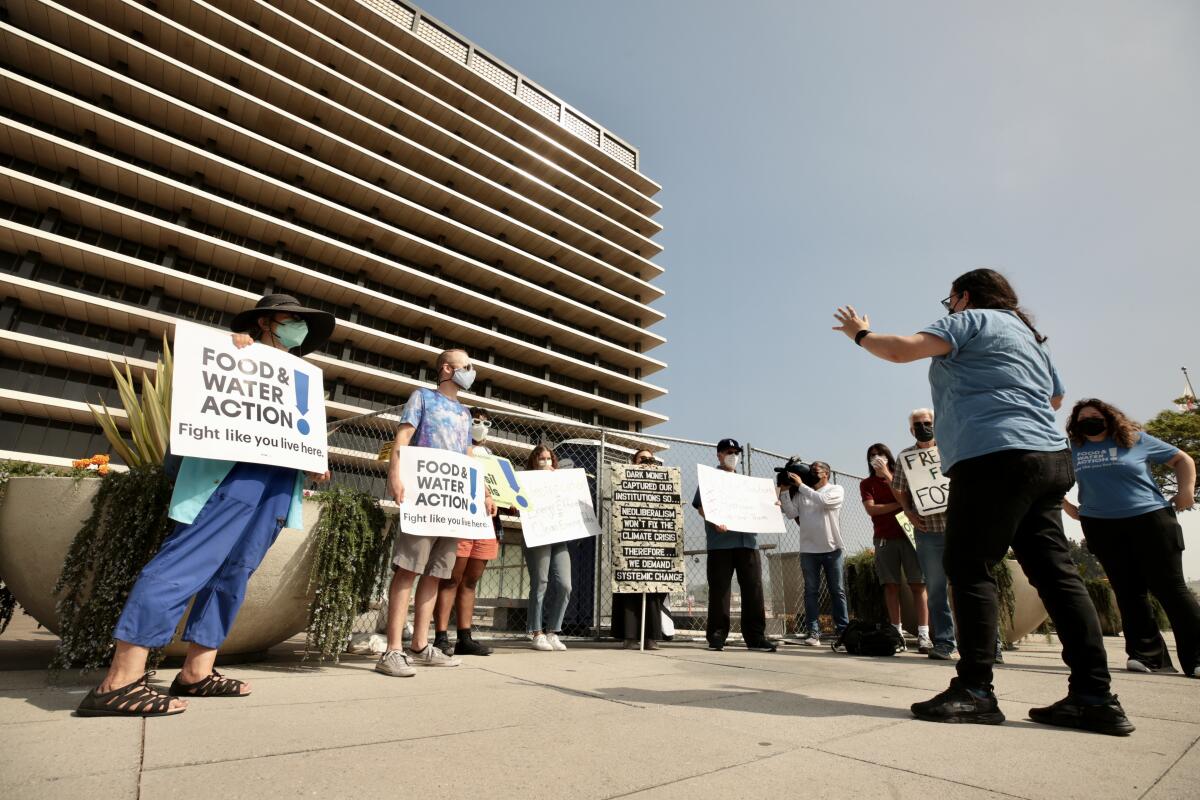
Some Angelenos may be skeptical about Bass bringing in a private-utility outsider to run DWP — especially one with a history at PG&E, which has filed for Chapter 11 bankruptcy twice this century, most recently after igniting a series of deadly wildfires.
But I came away from our conversation impressed by Quiñones, and optimistic about what she might accomplish here.
Partly that’s because of what she said when I asked her why she wanted the job.
She told me she wanted to try her hand at advancing clean power — especially for low-income communities and communities of color — specifically through public power. She said she’d come to believe that government-run utilities — despite their reputation for being slow-moving bureaucracies — can in some cases innovate more quickly than investor-owned monopolies such as PG&E and Southern California Edison, which must endure slow regulatory proceedings at the California Public Utilities Commission.
“We can try stuff faster, and fail faster, and change faster,” Quiñones said.
“We’re not reporting to the shareholders, and for profit. Everything that we do is to serve our communities,” she added.
And here’s the thing about DWP: As much as we might recoil at its shameful history of water grabs and coal combustion, we still need it to be an engineering and construction company, or we have no chance of meeting our aggressive climate goals.
Quiñones sounds ready to shake things up — at least a little bit — and accelerate clean energy development.
“LADWP has done incredible engineering feats and construction feats in the past. This is no different,” she said.
The municipal utility has a lot going for it — more than 11,500 employees, a $6.8-billion annual budget, a progressive mayor and City Council — even if Bass has been less focused on climate than her predecessor, Eric Garcetti — and an electricity mix that was already 53% climate-friendly as of 2022 when accounting for solar, wind, geothermal, nuclear and hydropower.
DWP also commissioned a first-of-its-kind study by the National Renewable Energy Laboratory concluding Los Angeles is capable of reaching 98% clean energy by 2030 and 100% by 2035 — without spurring blackouts or disrupting the economy. The study laid out a road map for getting there, putting DWP in the enviable position of having a detailed plan to guide its ambitions.
Still, there are obstacles. And it’s up to Quiñones to push through them.
One of the biggest challenges will be securing enough solar electricity — especially from large solar farms paired with batteries, which NREL and other experts have identified as the backbone of the energy transition — to replace coal- and gas-fired power.
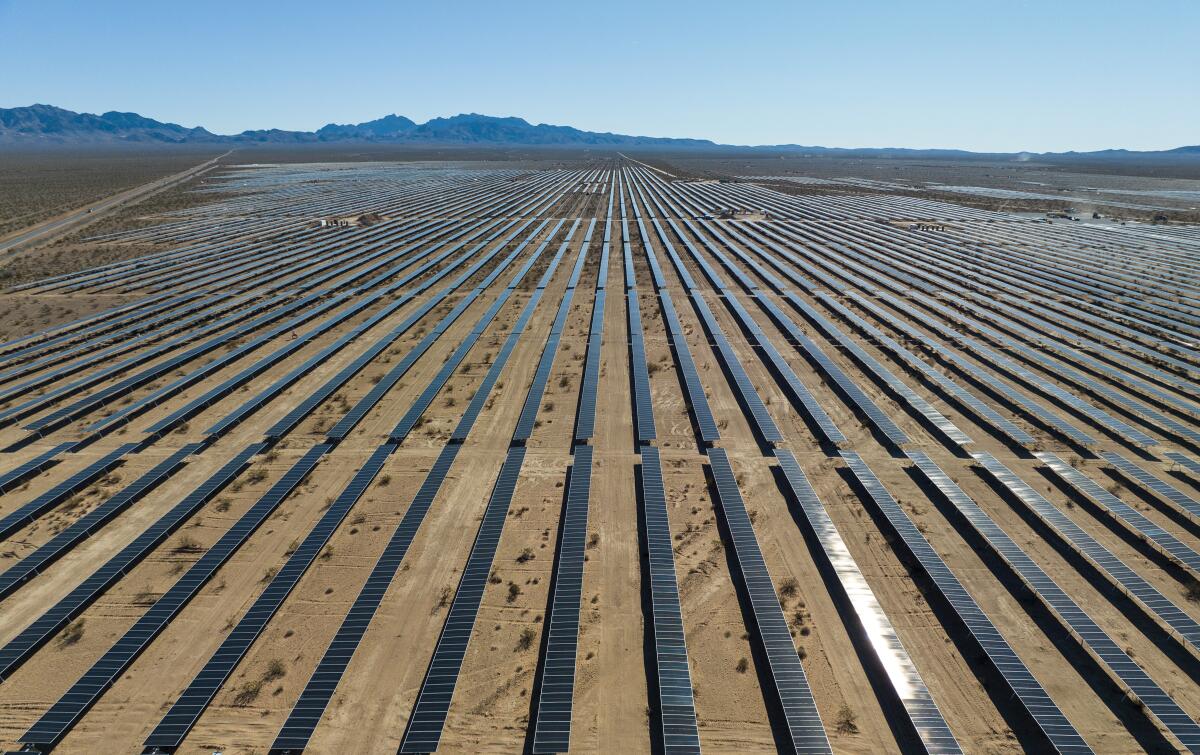
In 2022, solar farms supplied 14% of L.A.’s electricity, much of it coming from sprawling desert facilities in Kern County, north of the city. Unfortunately, a transmission “bottleneck” on the electric lines bringing power to L.A. is making it harder to import more solar. That means DWP must build new lines and expand the capacity of existing lines — a tricky task when it can’t just steamroll landowners, conservationists and other opponents like it could in the days before the California Environmental Quality Act.
So how will Quiñones make it happen? What’s her plan for speeding up infrastructure development and leading the world toward a sustainable future in which the heat waves, wildfires, floods and droughts of the climate crisis don’t get worse and worse?
Not an easy question. I could almost see Quiñones put on her private-sector hat before answering.
“We have to enable [DWP] to move,” she said. “We’re looking at all our organizational structures. Are we set up for success? Are we empowering everybody in the organization to come up to that full potential? Are we bringing the right consultants?”
“One of my jobs is making sure that city processes don’t slow us down from a procurement perspective,” she added.
Quiñones generally avoided getting too specific when I asked her about particular energy projects that might be in DWP’s future — partly because she’s still getting up to speed on all things Los Angeles, and partly because she answers to a five-member board of commissioners appointed by the mayor, and she needs to be careful to avoid making commitments without their approval.
Any chance Los Angeles will buy electricity from a massive Wyoming wind farm being built by billionaire Crypto.com Arena owner Phil Anschutz, who’s also stringing together a 732-mile transmission line to carry the renewable energy to California?
Quiñones said she hasn’t talked with Anschutz’s team, at least not yet.
“If the project makes sense, we’ll take it,” she said.
What about offshore wind turbines, which could help keep the lights on 24/7 by producing more consistently than onshore wind farms, and by staying strong into the evening, after solar panels stop producing? Quiñones was hopeful but noncommittal.
“We look at every possibility,” she said.
Building giant infrastructure isn’t always a good idea, as Angelenos should know from their tentacle-spreading history.
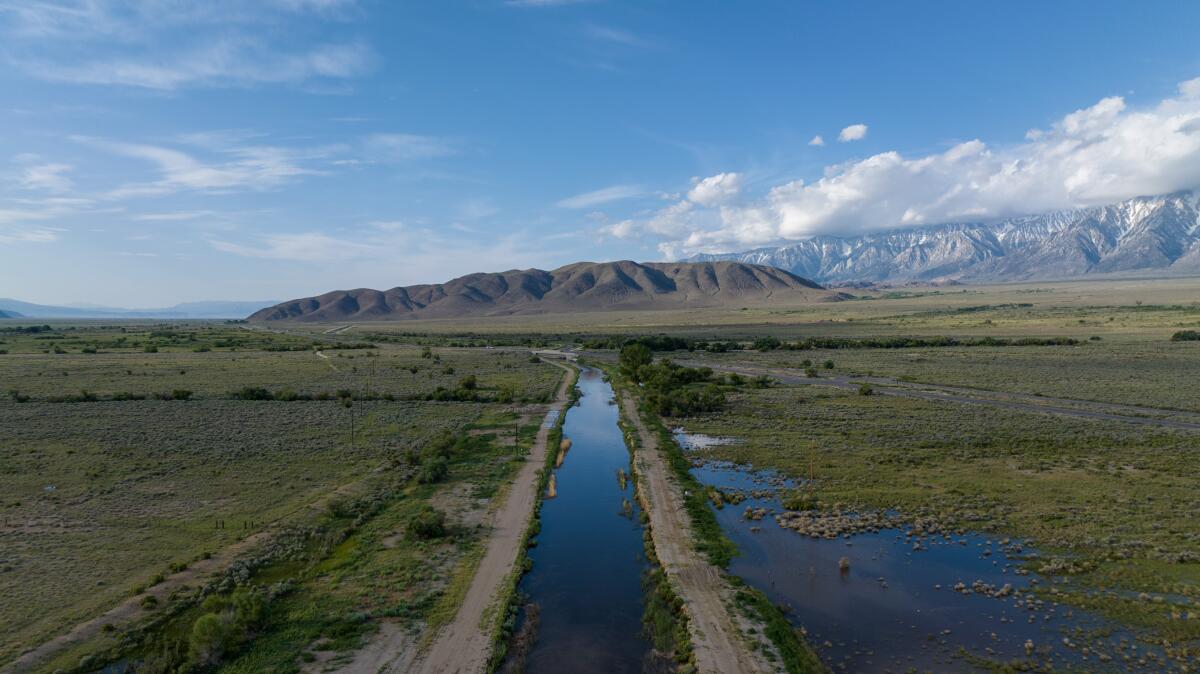
Solar farms, wind turbines and power lines can destroy wildlife habitat and disrupt scenic landscapes. Lithium mining for lithium-ion batteries can be similarly problematic. The less energy we use — and the more energy we supply locally — the better.
So I was encouraged that Quiñones said DWP should be helping Angelenos who put solar panels on their roofs get connected to the grid a lot faster — even if she wasn’t prepared to comment on whether incentives for rooftop solar should be higher.
I was also glad she expressed a interest in “virtual power plants” that limit the need for big renewable energy projects by linking up rooftops solar panels and home batteries and operating them in unison. Along the same lines, she suggested DWP would be moving forward with “vehicle to grid” programs that pay electric vehicle drivers to supply power to utilities in a pinch.
Crucially, she emphasized that DWP needs to bulk up its local electric grid to power more cars, heat pumps and induction stoves — vital technologies for removing heat-trapping fossil fuels from our lives. Those investments are especially time-sensitive ahead of the 2028 Olympic Games, by which time L.A. County hopes to electrify millions of homes, passenger vehicles and buses.
Sound hard? That’s because it will be. Especially with the fallout from a long-running ethics scandal continuing to cast a shadow over DWP — not that Quiñones sounded especially worried about the scandal interfering with her ability to do her job.
“I have to get my team working on a rebranding” of DWP, she said. “I hate to give 10% of the population of this company the power to destroy the reputation of the company when the other 90% are doing the right thing all the time.”
Some of the thorniest challenges facing Quiñones may involve four DWP-owned gas plants that still supply L.A. with lots of power — especially during heat waves, when Angelenos increasingly crank up their air conditioners to survive a warming planet.
Three of those gas plants lie along the coast — Scattergood near El Segundo, Harbor in Wilmington and Haynes in Long Beach. The fourth, Valley Generating Station, sits in the San Fernando Valley’s northeast corner, surrounded by Sun Valley and Pacoima communities that are mostly Latino and low-income, and whose residents breathe some of California’s most polluted air.
Garcetti thrilled clean energy advocates when he announced in 2019 that the city would abandon a DWP plan to invest billions of dollars upgrading the gas plants. That plan could have locked in decades of climate pollution and lung-damaging emissions.
But rather than preparing to shut down the facilities entirely, DWP wants to burn hydrogen instead.
That’s not necessarily bad. The agency has long said it needs reliable power plants in the L.A. Basin to lower the risk of blackouts during those nasty hot spells that are getting hotter with global warming. Like many utilities, it sees hydrogen as a nice substitute for fossil gas. And unlike some other utilities, it’s promised to use only “green” hydrogen generated via renewable power.
DWP intends to start burning a blend of 30% hydrogen and 70% gas at Scattergood by 2030, then ramp up to 100% hydrogen as technology improves — assuming technology improves. Some environmental justice advocates are worried it won’t work, leaving Los Angeles stuck burning gas — and communities around the power plants stuck breathing noxious fumes for years.
Even if the experiment works out, they’re worried hydrogen combustion can generate its own harmful air pollution. They’d prefer to see DWP go big on rooftop solar, virtual power plants and small-scale batteries as a substitute for the gas plants.
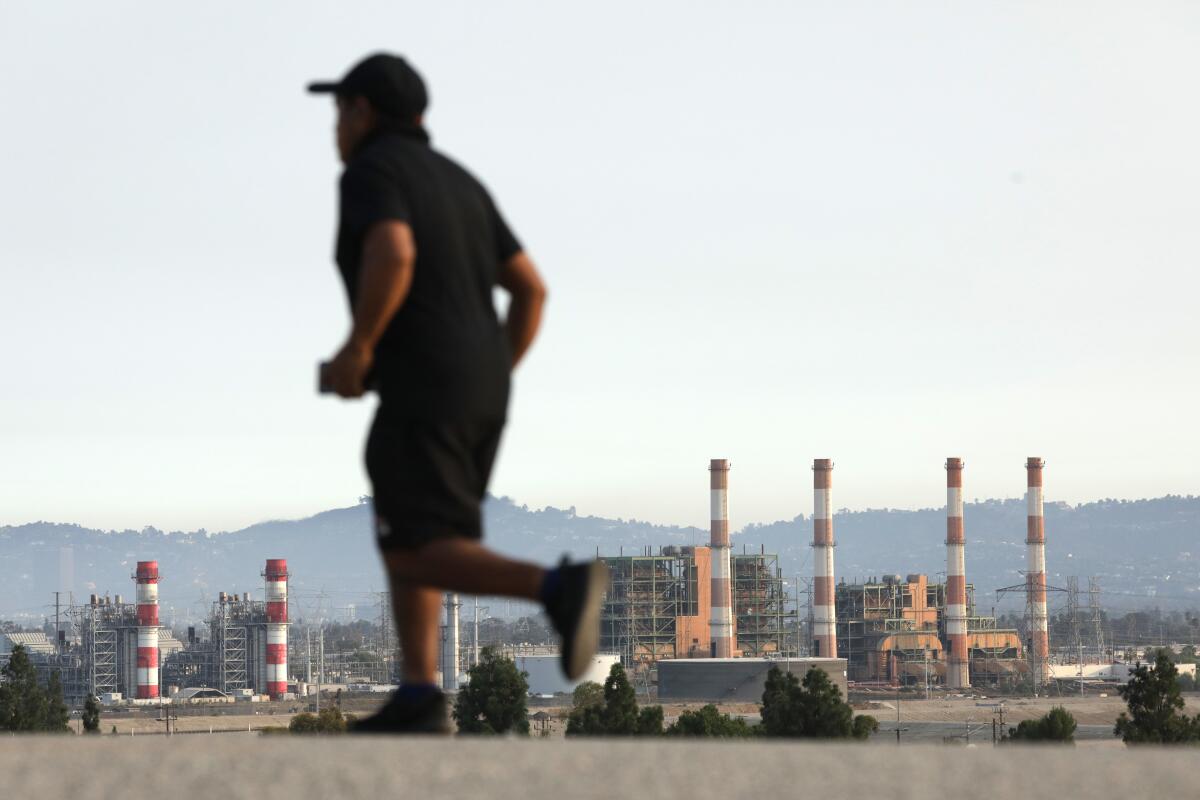
Quiñones said she’s doubling down on efforts to listen to communities. She also defended the importance of hydrogen.
“There’s not a lot of solutions for in-basin [electricity] generation but hydrogen or carbon-capture systems,” she said, referring to devices that snare planet-warming carbon emissions at power plants. “One of the two have to be part of the equation.”
DWP is also banking on hydrogen to replace its coal-fired Intermountain Power Plant outside Delta, Utah — for decades the city’s largest power source. As of April, there were about 1,000 construction workers on site, building a gas/hydrogen plant that’s slated to open next year, replacing the coal plant. As with the local gas turbines, the goal is to transition to 100% green hydrogen.
If Los Angeles succeeds, it could help lead the world toward a brighter future — and atone for the sins of its past.
The stolen water, the hazy air blanketing national parks, the contaminated groundwater beneath Indigenous homelands — none of that will just go away. Averting future catastrophes isn’t the same as making reparations. And as I’ve noted, building renewable energy can come with its own pitfalls. Balancing solar and wind energy development with conserving ecosystems is key.
But Quiñones has an unparalleled opportunity.
DWP is the nation’s largest public utility, Los Angeles its second-largest city. But this is about way more than population. This is L.A. — a global trendsetter through TV and the movies and star culture, through our food scene, through our tech industry and cultural diversity and sports. If you can make it happen here, you can make it happen anywhere.
If Quiñones can guide Los Angeles to 100% clean energy by 2035? Maybe the rest of the world will come along.
Unfair of me to pin that on one person? Totally.
So let’s help her out.
ONE MORE THING
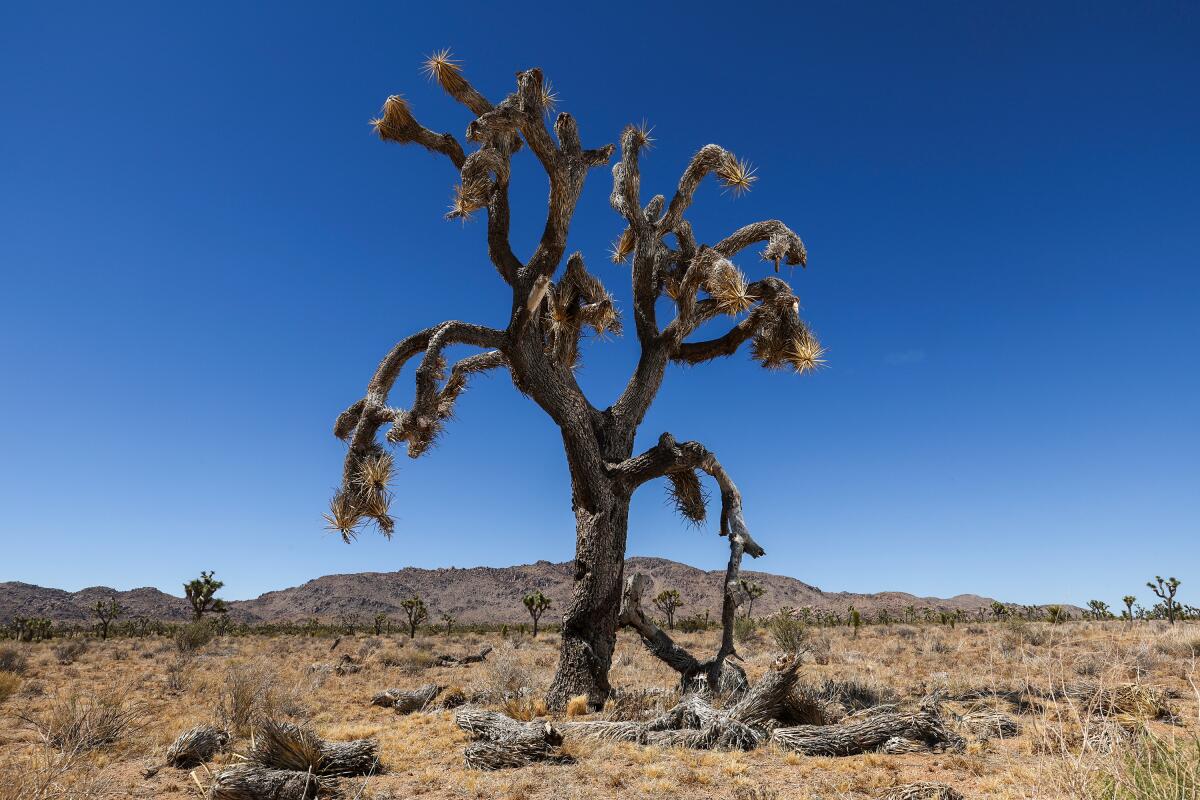
I’ve gotten lots of vitriolic criticism for arguing in a recent column that it’s not always a terrible idea to tear down Joshua trees for solar farms, given that global warming poses such a serious threat to the desert ecosystems that Joshua trees call home.
So I appreciated this thoughtful response by environmental journalist Jonathan P. Thompson, in his excellent newsletter, the Land Desk. He agreed with my premise — that we’ll probably need to pave over some ecosystems to deal with the climate crisis, painful as that may be — while arguing that the solar project that prompted my column is being built in the wrong spot.
Totally reasonable take. This is the kind of dialogue we need to be having.
I also enjoyed talking with Columbia Journalism Review’s Kevin Lind about tensions between renewable energy and conservation. You can read the Q&A here. We also discussed strategies for journalists looking to improve their climate change coverage.
See you next week.
This column is the latest edition of Boiling Point, an email newsletter about climate change and the environment in California and the American West. You can sign up for Boiling Point here. And for more climate and environment news, follow @Sammy_Roth on X.
Toward a more sustainable California
Get Boiling Point, our newsletter exploring climate change, energy and the environment, and become part of the conversation — and the solution.
You may occasionally receive promotional content from the Los Angeles Times.




